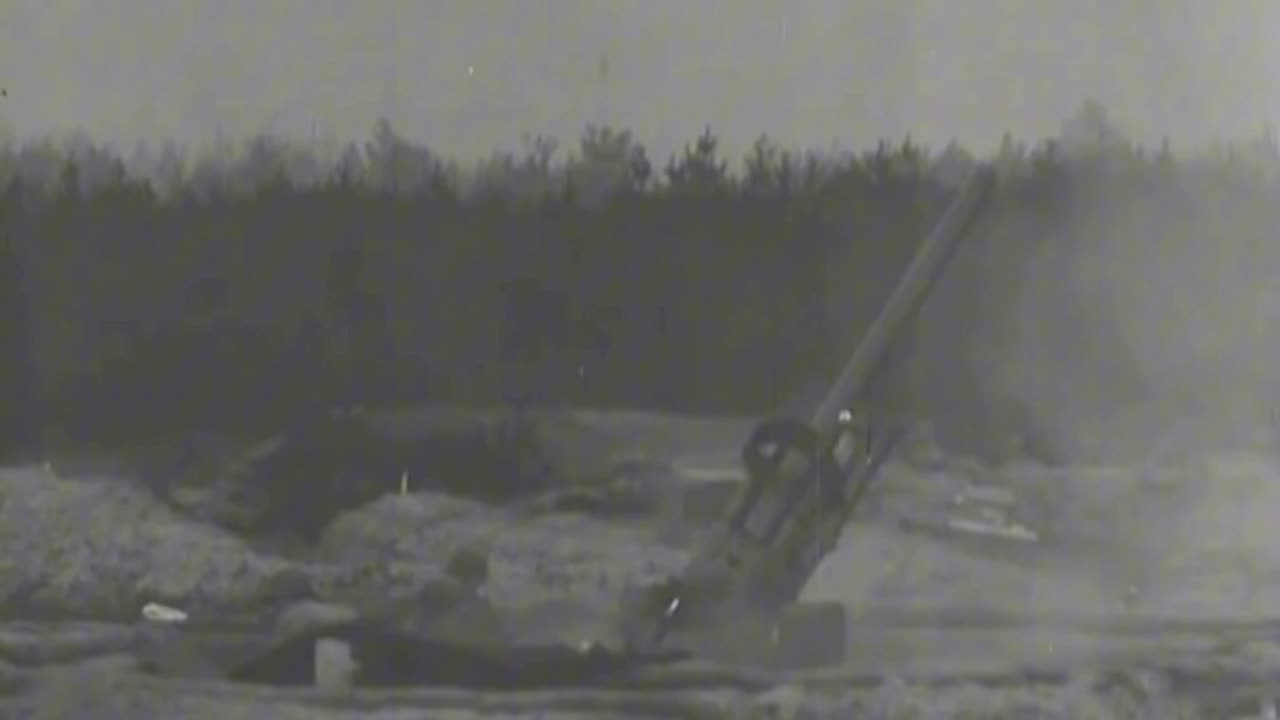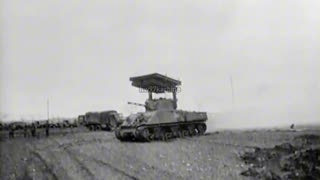Premium Only Content

Anti-aircraft Artillery belt defending against V-1 Flying Bombs targeting Antwerp in March 1945
During the 1944-1945 German bombing campaign against the Allies in the Belgian port of Antwerp, 90mm AAA operated 22 hours a day with two hours a day for maintenance. The life expectancy of the gun tube was 1,500 to 2,000 rounds and many batteries wore out three or four sets of tubes over the course of the campaign. After the third wore out, the gun slide had to be replaced as well. Due to shortages of replacements some barrels were retained until they fired as many as 2,500 rounds but this was a dangerous practice. When the tube became that worn, muzzle velocity grew erratic and, in some cases, the lands in the tube began to peel. For much of the four months of December 1944 to March 1945, nearly every 90mm anti-aircraft gun barrel produced was sent to Antwerp, while units in the Pacific and Mediterranean had to wait.
From October 1944 to March 1945, 4,883 V-1s were detected. Of these, only 4.5% fell into the designated protected area. The effectiveness of the anti-aircraft defense meant that only 211 got through the defenses; however, those that fell within the area caused damage and loss of life.
-
 2:45
2:45
hw97karbine
8 days agoT34 Calliope rocket launcher mounted on an M4 Sherman tank in action in 1945
561 -
 LIVE
LIVE
BonginoReport
2 hours agoLyin’ Jimmy Kimmel Faces The Music - Nightly Scroll w/ Hayley Caronia (Ep.137)
14,555 watching -
 LIVE
LIVE
Donald Trump Jr.
5 hours agoThe Warrior Ethos & America's Mission, Interview with Harpoon Ventures Founder Larsen Jensen | Triggered Ep275
2,128 watching -
 1:12:08
1:12:08
TheCrucible
1 hour agoThe Extravaganza! EP: 39 (9/18/25)
25.1K5 -
 DVR
DVR
Kim Iversen
3 hours agoNick Fuentes Denies Israel Killed Charlie Kirk | Right-Wing CANCELS Jimmy Kimmel
5.17K80 -
 LIVE
LIVE
Candace Show Podcast
1 hour agoEXCLUSIVE! Another Photo Of Tyler Robinson | Candace Ep 238
8,941 watching -
 2:21:09
2:21:09
Redacted News
2 hours agoWhat are they hiding? New video evidence in Charlie Kirk's Shooting SHAKES FBI'S case | Redacted
100K173 -
 41:53
41:53
Kimberly Guilfoyle
4 hours agoCharlie's Legacy and Our Mission
12.7K5 -
 1:07:55
1:07:55
vivafrei
4 hours agoJimmy Kimmel Out Indefinitely! Trump "Srubs" Study on Right Wing Violence? Clinton Tweet & MORE
176K62 -
 1:35:02
1:35:02
The Quartering
4 hours agoNuclear Fallout From Jimmy Kimmel Firing, New Head Of TP USA, Obama Whines
193K67